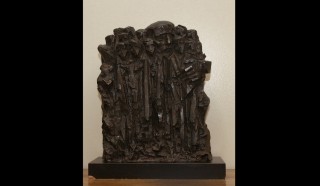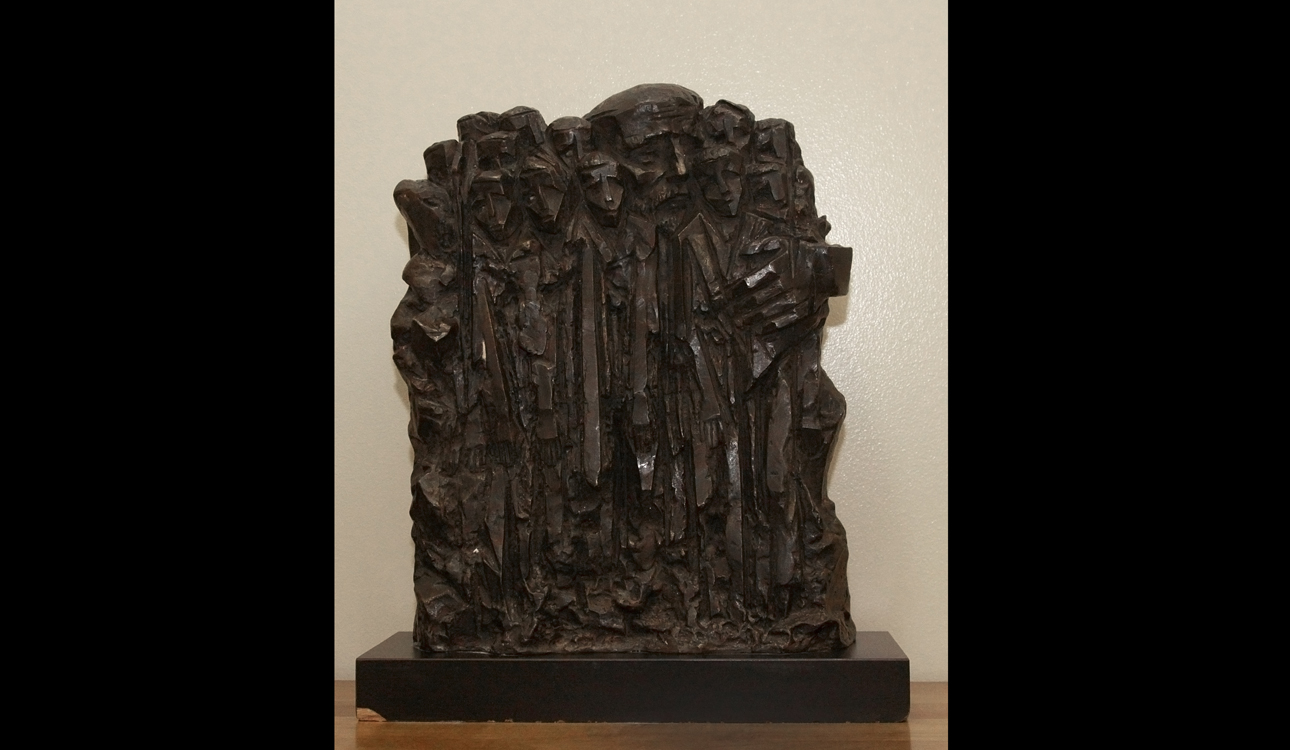
By Lela Atwood
Contributor
A Holocaust memorial sculpture that is tucked away in Moody Memorial Library may be put on prominent display once again. Behind the piece is a story of heroism — a story of remembrance.
Dr. Tom Hanks, English professor, said he was transfixed when he first saw the sculpture called “Korczak and His Children” at an art sale in Temple Agudath, a Waco synagogue.
At 8 inches tall, 13 inches wide, the art piece portrays a bearded man with expressive eyes. His oversized hand stretches out around the 10 undernourished young children who surround him.
Hanks knew he had to have it.
The art piece was made by Israeli artist Baruch Saktsier to honor a World War II hero who sacrificed his life so that a group of children would never be abandoned.
Dr. Janusz Korczak, the sculpture’s namesake, was a Jew in Poland who worked as a physician and cared for 200 Jewish children in the Warsaw Ghetto during a time of chaos, food shortages and poor living conditions. Korczak had the opportunity to escape twice since his job as a physician brought him high connections. But twice he refused, because he didn’t want to leave the Jewish children under his care.
When Nazi officials rounded up the orphans, Korczak chose to be at their side while they traveled in cattle cars to the concentration camp called Treblinka. Nobody from the group came out alive.
The copy of “Korczak with His Children” Hanks found is a reproduction of the sculpture that stands outside of Yad Vasem, a Holocaust memorial located in Jerusalem. It’s also the only copy of the memorial in the world.
After making their purchase, Hanks and his wife, Dr. Carole Hanks, set the statue in their living room. But they soon decided the piece deserved a more public setting.
“We bought the [sculpture] because it was so powerful,” Hanks said. “More and more we felt that we shouldn’t keep it to ourselves.”
In September 1996, they donated the sculpture to the Moody Library, where it received with a welcoming presentation. The event was opened by former Baylor president Robert B. Sloan, Jr.
Dr. Harvey Sparks, a Waco physician who spoke at the presentation, said Korczak was not only a hero, but an innovator who treasured children and their innocence.
“When you compare his philosophies on children to what they are today, he was well ahead of his time,” Sparks said. “He believed kids were inherently good and needed to be individually honored and taken care of.”
Sparks, a member of Temple Agudath and one of art sale coordinators, said today’s society has yet to catch up with the ideas of Korczak.
“When I see what goes on in schools, it sickens me,” Sparks said. “We have a society that focuses on maintaining discipline and achievement, and Korczak was not that person.”
After the event, the sculpture was put on permanent display in the library, moving from the garden level to the first floor and then to the second floor of Jones Library.
Bill Hair, dean of university libraries, said library staff members were concerned about the art piece being too heavy for its display shelf. So they decided to temporarily move the sculpture to a sturdier table, located in a corridor of library offices away from public view.
Yet despite the fact the sculpture has been tucked away, there is hope that it will soon be in the public halls of Moody Library again.
Hair said he is interested in taking steps to prominently display the art piece. All that is needed is a sturdy, secure display case and a description of what the sculpture represents since the original description has gone missing.
“I think I need to have a conversation with Tom about reconstructing some kind of descriptive piece,” Hair said. “That really does make all the difference.”
Hanks said he and his wife are saving money for a new display table for the sculpture because they want students and faculty to remember the tragic events of history that inspired this work of art.
“Germany did a horrible thing during World War II,” Hanks said. “I hope that everyone who looks at this and is moved by it will think, ‘We will never let this happen again.’”





